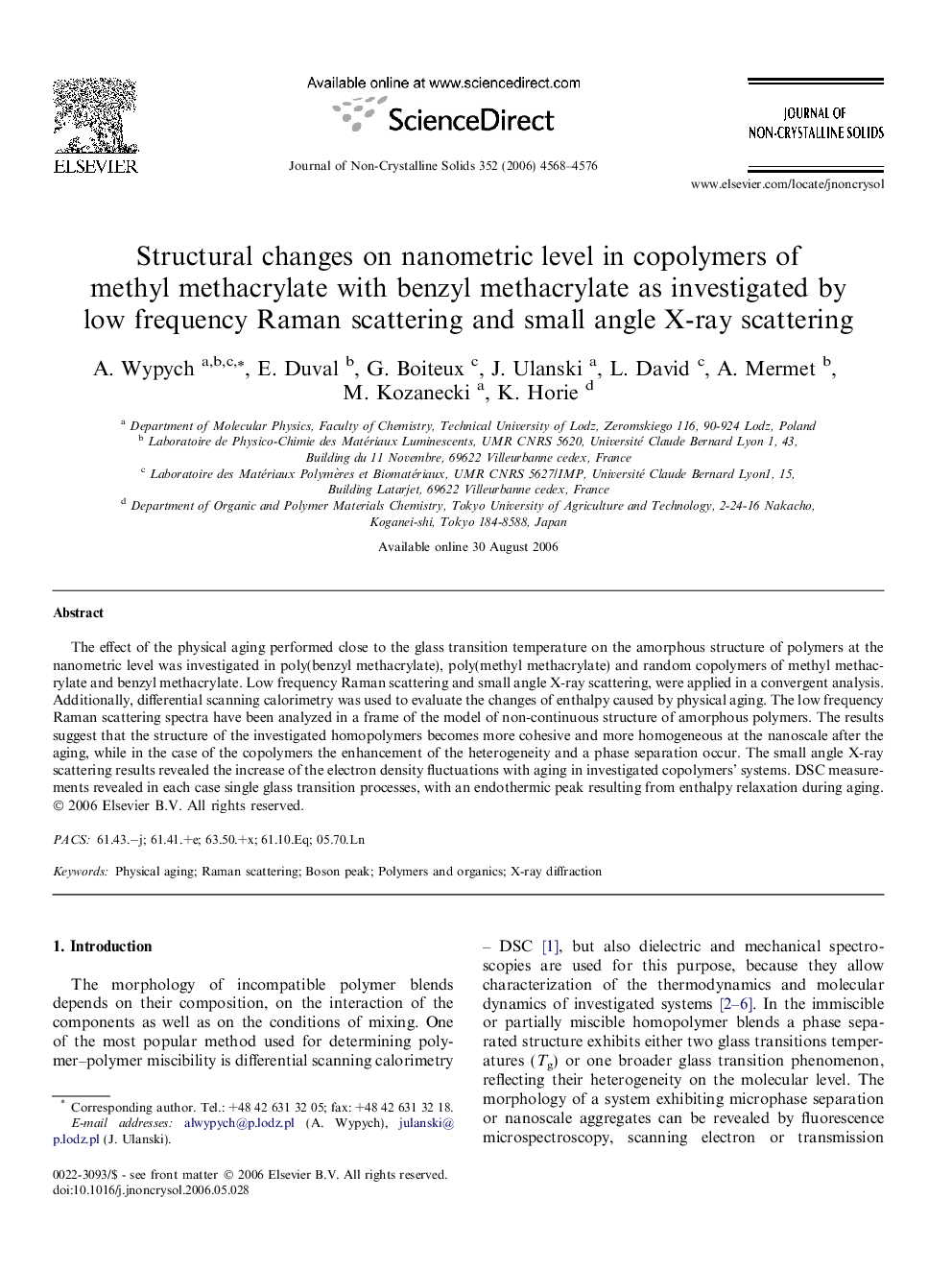| Article ID | Journal | Published Year | Pages | File Type |
|---|---|---|---|---|
| 1485863 | Journal of Non-Crystalline Solids | 2006 | 9 Pages |
Abstract
The effect of the physical aging performed close to the glass transition temperature on the amorphous structure of polymers at the nanometric level was investigated in poly(benzyl methacrylate), poly(methyl methacrylate) and random copolymers of methyl methacrylate and benzyl methacrylate. Low frequency Raman scattering and small angle X-ray scattering, were applied in a convergent analysis. Additionally, differential scanning calorimetry was used to evaluate the changes of enthalpy caused by physical aging. The low frequency Raman scattering spectra have been analyzed in a frame of the model of non-continuous structure of amorphous polymers. The results suggest that the structure of the investigated homopolymers becomes more cohesive and more homogeneous at the nanoscale after the aging, while in the case of the copolymers the enhancement of the heterogeneity and a phase separation occur. The small angle X-ray scattering results revealed the increase of the electron density fluctuations with aging in investigated copolymers' systems. DSC measurements revealed in each case single glass transition processes, with an endothermic peak resulting from enthalpy relaxation during aging.
Keywords
Related Topics
Physical Sciences and Engineering
Materials Science
Ceramics and Composites
Authors
A. Wypych, E. Duval, G. Boiteux, J. Ulanski, L. David, A. Mermet, M. Kozanecki, K. Horie,
